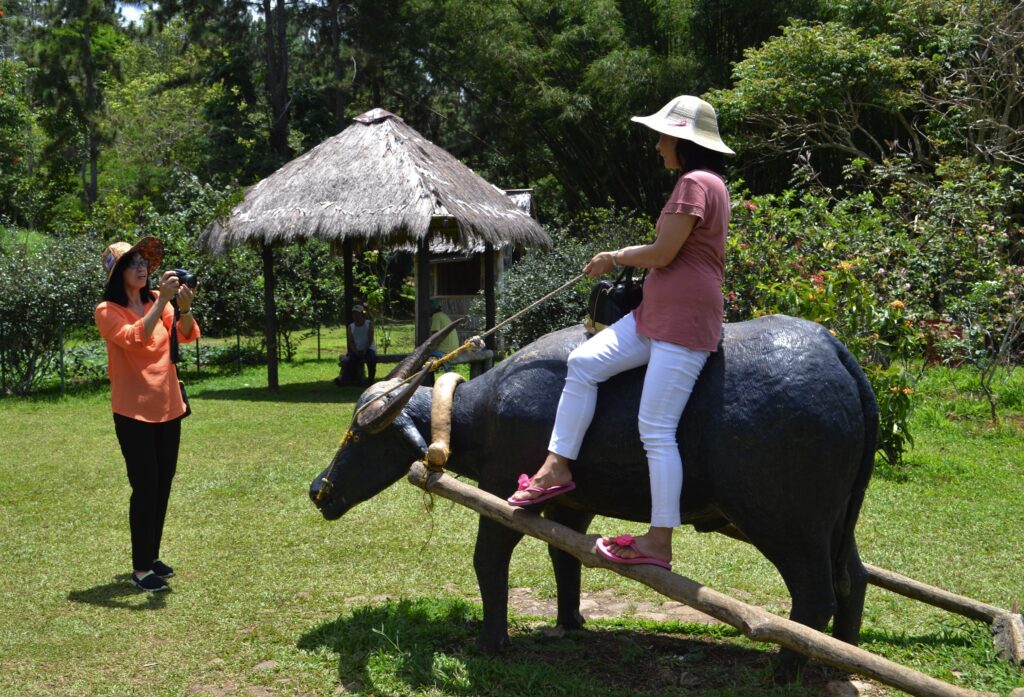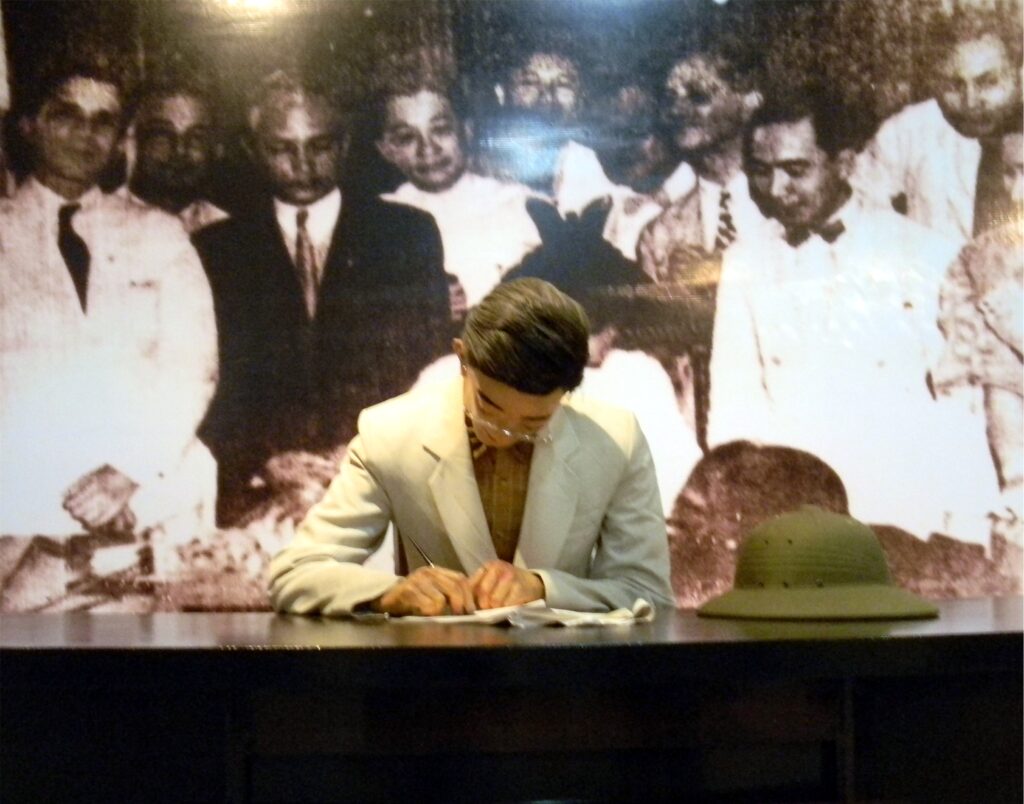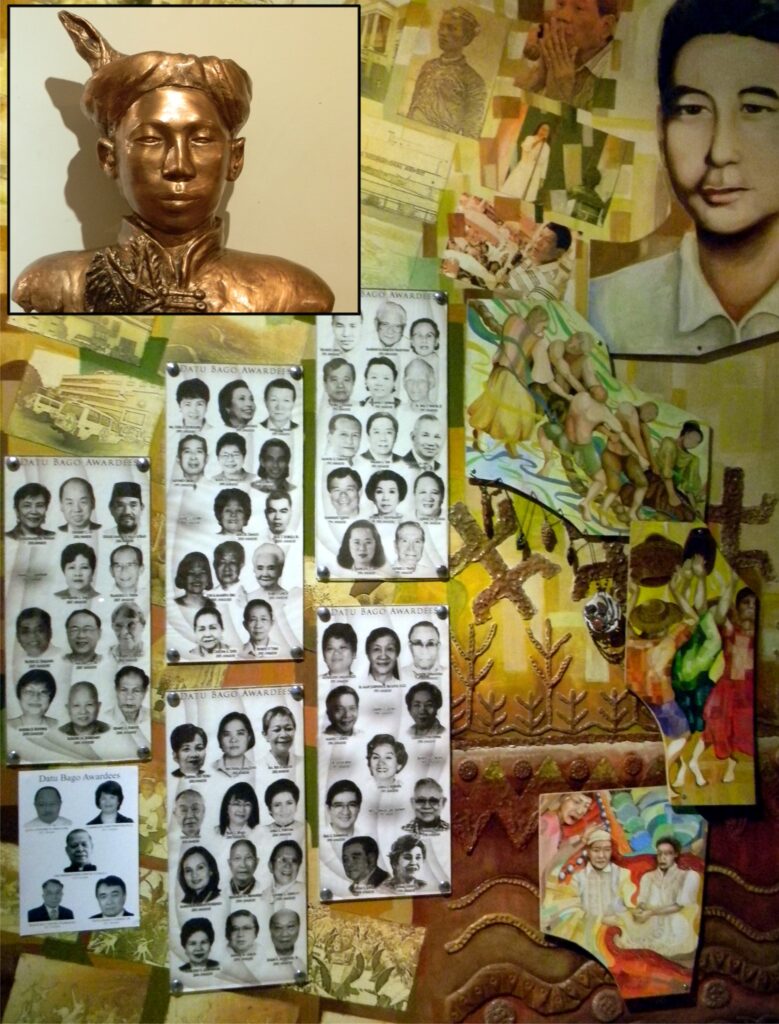Text and Photos by Henrylito D. Tacio
From being tagged as “Murder City,” Davao City became “one of the most livable cities in the Asia” (both sobriquets were bestowed by the defunct Asiaweek magazine). Indeed, the city has gone a long, long way. Today, the city is one of the country’s top tourist destinations.
The de facto capital of Mindanao, Davao, is one of the largest cities in the world with a total land area of 2,443.61 square kilometers. Its boundaries encompass commercial areas as well as beaches, mountains, and forests. Approximately, it is 7.8 times the size of Cebu and three times that of the entire Metro Manila.
Situated beside Davao Gulf, the city is dominated by the country’s highest peak, the 2,954-meter-high Mount Apo. The dormant volcano is home to tribes such as Bagobo, Manobo, Mandaya, and B’laan, and its fertile rolling foothills are teeming with exotic fruits and beautiful flowers.
Credited for transforming Davao City from a “chaos urban” to a “livable city” is no less than Rodrigo R. Duterte, the current president of the Philippines. After all, he was mayor of the city for almost two decades.
“His fight for a better Philippines,” replied Klaus Doring, a German who now lives in Davao City, when asked what he likes most about Duterte.
Klaus knows what he is talking about. He first came to the Philippines in 1976. He now lives in Davao City together with his Filipina wife, Rossana Balcom, since 1999.
“When my plane was leaving Manila in 1976, I encountered some mixed emotions,” he said. “Maybe my time then was too short…”

Eden Nature Park 
Wax figure of Pres Quezon signing the paper 
Datu Bago awardees (inset – bust face of Datu Bago)
Klaus is perhaps one of the very few people who have the opportunity of traveling all over the world. “I love exploring different cultures and meeting new people,” he said.
Since 1987, he has visited the Philippines on a regular annual basis because his wife is a Filipina. “I met her during my first visit in Davao City in 1982,” Klaus recalled. He pursued her until she finally agreed to marry him.
Klaus didn’t only catch the apple of his eyes, he also fell in love with the city, which was not chaotic with traffic then, and high-rise buildings were still far from reality. “I think I was one of the few foreigners who was staying here,” he said. “Today, Davao has changed a lot and is now one of the most progressive cities in the Philippines.”
Klaus is not the only foreigner who loves Davao City. “For me, I like Davao because it’s a place I grew to know over time,” said Jonathan Watson, an American. “Throughout my life, growing up, I have moved around and have lived on thirteen different streets in five different cities/towns within two different countries. Davao is one of the five that I’ve lived at the second longest.”
He considered Davao City as the number one that contains “the most connections that I have, as well as experiences, and knowledge of the area.” There was one town where he lived the longest in his childhood, but he lacked the friends, experiences, and understanding of the place” when compared to Davao.
“In short, Davao is my comfort zone,” Jonathan admitted. “It’s what I know and call home.”
Then, there’s Ulrich Kronberg, another German national. “Davao is the center of my life and gives me a balance,” he said. “My kids feel home, too. We are close to the sea and it’s not far from the mountains.”
Steve Hyde is an American who grew up in the Philippines when his parents became missionaries. Now, he is working in Cambodia with his family. But he still can’t forget Davao. “There are plenty of nicer and more trendy places, but Davao’s smell, sites and sounds remind me of home.”
People who have visited Davao have fond memories about the country’s biggest city. “Visiting Davao’s 911, whew, I really admired the command center and all,” said Larry Madarang, a journalist.

Eden Nature Park 
Wax figure of Pres Quezon signing the paper
Durian is a very popular city in the city. There are people who hate it, but there are those who live it. One of those who love the controversial fruit is Jonathan L. Mayuga, a journalist who writes for a national daily. When he visits Davao, he always finds time to eat durian.
Davao City is the third-most populous city in the country – after Quezon City and Manila. As of 2020, the city is home to 1,825,450.
In its logo, the tagline “Davao Life is Here” figures prominently. “The logo symbolizes the five icons of Davao: the regal Philippine eagle; the majestic Mount Apo; the 11 Ethno-linguistic tribes; the King of fruits durian; and the beautiful Queen of Philippine flowers, waling-waling,” explained the city’s website, davaocity.gov.ph. “All are signifying the bounty and richness of the city’s flora and fauna. The logo also symbolizes what the Dabawenyos aspire and live for – unity amidst diversity.”
Wikipedia reports Davao City has ten sister cities, namely: Bacoor, Baguio, Bayugan, Cabanatuan, Cebu City, Cotabato City, Legazpi City, Manila, Marikina, Quezon City, San Juan City, and Zamboanga City.
Davao City’s sister cities internally, according to Wikipedia, are Jinjiang, Fujian, and Nanning (China), Manado and Pekanbaru (Indonesia), Kitakyushu (Japan), Koror (Palau), Montevideo (Uruguay), Panama City (Panama), Vladivostok (Russia), Keelung (Taiwan), and Kauai County, Hawaii and Tacoma, Washington (United States).
Its colorful history started on June 29, 1848, when the Spanish founded Davao in the Davao Gulf. During the period of the Americans, Davao grew and became more progressive.
On March 16, 1936, Assemblyman Romualdo C. Quimpo filed Bill 609, wanting to create the city from the town of Davao and the municipal district of Guianga. Seven months later, on October 16, President Manuel L. Quezon signed Commonwealth Act No. 51, an act creating the Chartered City of Davao.
Since then, Araw ng Dabaw – a citywide celebration for the anniversary of the city – was celebrated every March 16. “Araw ng Davao is marked by a series of events across the metropolitan area when the citizens celebrate the birthday of this multicultural city,” the website officeholidays.com stated. “The festivities cover a jam-packed, seven-day schedule of trade fairs and cultural presentations. There is also a colorful civic-military parade and citywide beauty pageants.”
But during the recent celebrations, these events never happened. Last year, Mayor Sara Duterte canceled the anniversary that generally draws at least 200,000 domestic and foreign visitors as a precaution against the spread of the coronavirus disease 2019 (COVID-19).
“It is with a heavy heart that I have decided to cancel the events of the 83rd Araw ng Dabaw celebration,” Duterte said during a press conference that was held at her city hall office.
This year, the celebration was again canceled. In a message that was posted in a social media account, Duterte said, “This year is the second time we are celebrating the Araw ng Dabaw virtually – without the usual festivities and gatherings we have been accustomed to in the past.
“A lot has happened in the span of a year. We are not the same city we were in 2020, and the threat of COVID-19 is still present but… we shall overcome, as we always have, (this) adversity.”
But instead of celebrating Araw ng Dabaw on March 16, it was moved to March 1. The reason for this: the city was originally founded on March 1, 1937, according to Councilor J. Melchor Quitain, Jr. In fact, if you happen to look at the landmark in city hall, you will find that the date is indeed March 1.
On August 22, 2019, President Duterte signed Republic Act No. 11379, called “An Act Declaring March 1 of Every Year a Special Working Holiday in the City of Davao, Province of Davao del Sur, to be Known as ‘Araw ng Dabaw.’” It repealed Purpose Republic Acts No. 7441 and 7685.
With the availability of vaccines, many Dabawenyos are hoping that next year a big celebration will happen.

